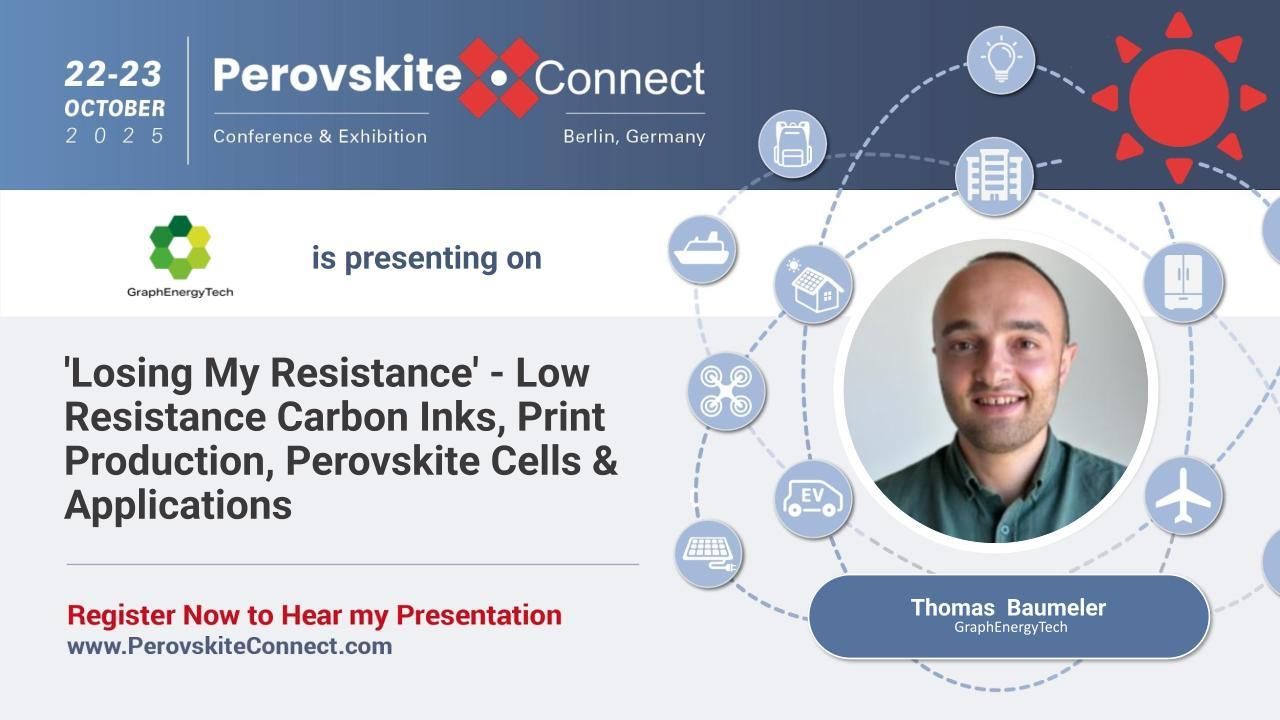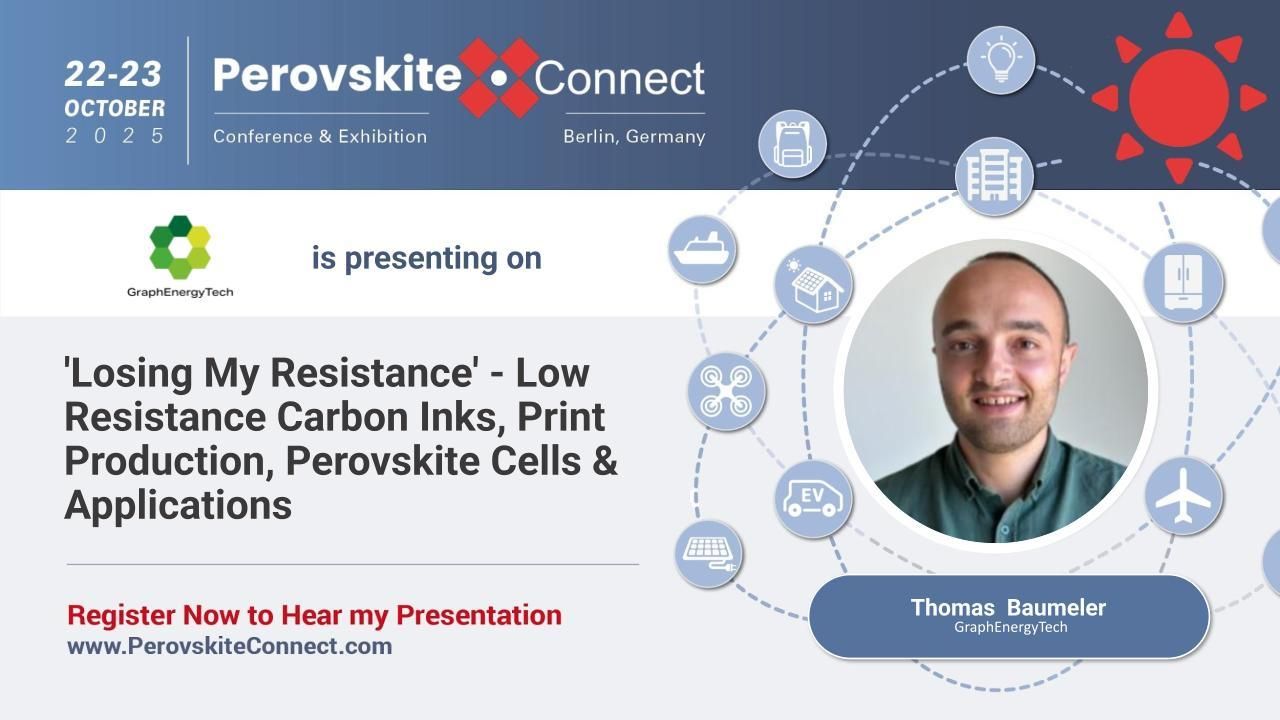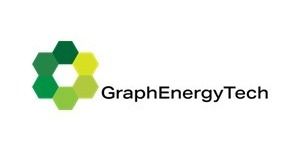

GraphEnergyTech - 'Losing My Resistance' - Low Resistance Carbon Inks, Print Production, Perovskite Cells & Applications
Perovskite Connect Berlin October 2025
TechBlick Event
Information
Low Resistance Carbon Inks, Print Production, Perovskite Cells & Applications.
Why carbon inks matter for the future of perovskite solar
GraphEnergyTech Ltd will be presenting at TechBlick Perovskite Connect 2025 in Berlin.
The price of silver is currently surging. Early October has seen prices touching $48/troy ounce. up by ~49 % compared to the same time in 2024 & more than double late 2023 prices of $22–25. The reasons behind this are a mix of macro, industrial & technical factors; industrial demand outpacing supply, economic uncertainty (inflation fears & weakened fiat currencies creating “safe-haven” demand) & increasing significant industrial uses across electronics, solar & battery technologies.
Our work focuses on replacing silver with carbon/graphene-based inks. A simple goal of high conductivity, low cost & environmental responsibility. Printable carbon electrodes are already delivering lower resistance than traditional carbon inks, with currently up to 87% cost reduction compared with silver (in a dynamic market) and a 97% lower carbon footprint. By tuning our formulations, we are achieving repeatable sheet resistance values below 0.1 Ω/□ at low application weights. One of the biggest hurdles in moving away from silver is integration into existing production lines. Inks must be developed for production speeds & cure at low temperatures to deliver consistent results.
The same ink formulations being developed for perovskite solar have application in wider printable electronics applications including interconnects, touch sensors, bio-compatible sensors & display electrodes where resistance needs to be simply ‘low enough.’ Carbon-based inks are not only offer cost & environmental savings but unlock stability & forms that rigid metallic systems cannot.
Perovskite technology offers high efficiency under indoor lighting & lightweight/flexible modules that enable truly design-driven electronics. But there are challenges in stability & durability under heat, humidity & prolonged exposure. Our work contributes to these discussions by providing a materials platform that is low cost, highly conductive & compatible with real-world production.
The discussion in Berlin will go beyond lab results. We will address what it takes to bring carbon inks into production, how they perform in real devices, and where they fit in the wider ecosystem of perovskite PV and printable electronics. We will also share how our collaborations with perovskite manufacturers and OEMs are shaping the next steps – from pilots to commercial integration. For perovskite to grow from research promise to manufacturing reality, the industry needs reliable, affordable & sustainable electrode materials. Carbon and graphene-based systems offer a credible path forward & we invite you to join us in Berlin to be part of that conversation.
We welcome discussions with perovskite manufacturers, OEMs, and material suppliers interested in trials, pilots & co-development. To arrange a meeting during the event, please contact:
Thomas Baumeler – thomas.baumeler@graphenergytech.com
Chris Jones – chris.jones@graphenergytech.com
Why carbon inks matter for the future of perovskite solar
GraphEnergyTech Ltd will be presenting at TechBlick Perovskite Connect 2025 in Berlin.
The price of silver is currently surging. Early October has seen prices touching $48/troy ounce. up by ~49 % compared to the same time in 2024 & more than double late 2023 prices of $22–25. The reasons behind this are a mix of macro, industrial & technical factors; industrial demand outpacing supply, economic uncertainty (inflation fears & weakened fiat currencies creating “safe-haven” demand) & increasing significant industrial uses across electronics, solar & battery technologies.
Our work focuses on replacing silver with carbon/graphene-based inks. A simple goal of high conductivity, low cost & environmental responsibility. Printable carbon electrodes are already delivering lower resistance than traditional carbon inks, with currently up to 87% cost reduction compared with silver (in a dynamic market) and a 97% lower carbon footprint. By tuning our formulations, we are achieving repeatable sheet resistance values below 0.1 Ω/□ at low application weights. One of the biggest hurdles in moving away from silver is integration into existing production lines. Inks must be developed for production speeds & cure at low temperatures to deliver consistent results.
The same ink formulations being developed for perovskite solar have application in wider printable electronics applications including interconnects, touch sensors, bio-compatible sensors & display electrodes where resistance needs to be simply ‘low enough.’ Carbon-based inks are not only offer cost & environmental savings but unlock stability & forms that rigid metallic systems cannot.
Perovskite technology offers high efficiency under indoor lighting & lightweight/flexible modules that enable truly design-driven electronics. But there are challenges in stability & durability under heat, humidity & prolonged exposure. Our work contributes to these discussions by providing a materials platform that is low cost, highly conductive & compatible with real-world production.
The discussion in Berlin will go beyond lab results. We will address what it takes to bring carbon inks into production, how they perform in real devices, and where they fit in the wider ecosystem of perovskite PV and printable electronics. We will also share how our collaborations with perovskite manufacturers and OEMs are shaping the next steps – from pilots to commercial integration. For perovskite to grow from research promise to manufacturing reality, the industry needs reliable, affordable & sustainable electrode materials. Carbon and graphene-based systems offer a credible path forward & we invite you to join us in Berlin to be part of that conversation.
We welcome discussions with perovskite manufacturers, OEMs, and material suppliers interested in trials, pilots & co-development. To arrange a meeting during the event, please contact:
Thomas Baumeler – thomas.baumeler@graphenergytech.com
Chris Jones – chris.jones@graphenergytech.com
